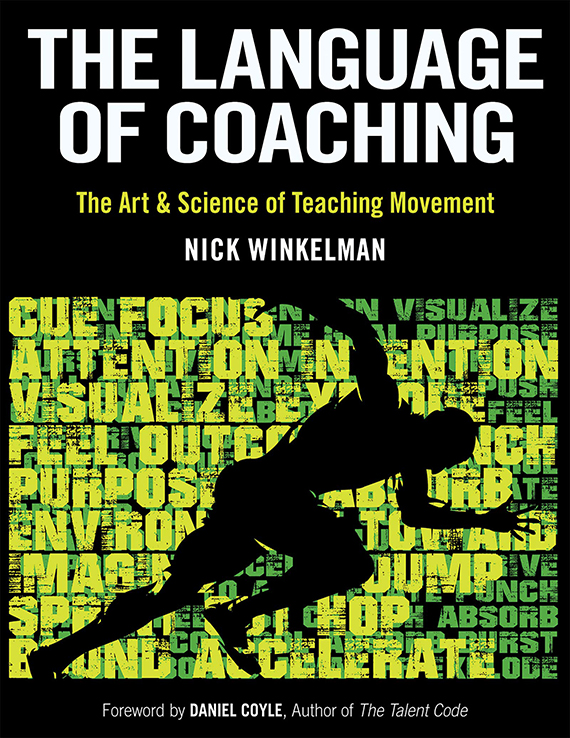
Introduction
I was keen to read The Language of Coaching after hearing Nick Winkelman interviewed on several movement podcasts. He is the head of athletic performance and science for the Irish Rugby Football Union – not an expert on Pilates – but he addresses this book to anyone teaching movement.
Overview
The Language of Coaching is broken into three parts
- the way people learn to move, pay attention and remember
- coaching language, creating and adapting cues, analogies
- cueing exercises and examples
The book goes into a lot of detail and Nick draws on research and science to explain concepts like internal and external cueing. Internal cues are useful in describing and setting up exercises e.g. “Nod your chin to your chest and begin to lengthen your spine into a forward curve” and can work for simple, one joint moves. For complex moves like the Teaser, external cues e.g. “reach to the window” are more effective than getting the client to focus on one muscle group.
Applying the theory
The third section of the book applies the theory. There are 27 movement sequences depicted in clear visuals. Nick uses different styles of cues for each exercise to illustrate what tool to use depending on what you wanted to correct. Although the sequences are not Pilates e.g. Chest Pass, Two-Leg Front Squat, they have been chosen to demonstrate a wide range of movement directions and types: vertical, horizontal, speed, power, strength. The frequent opportunities to try out the cueing strategies with helpful direction and examples solidifies the reader’s understanding.
To take the lessons learned here into a Pilates environment requires a lot of thought and preparation. I have found it difficult to avoid mentioning body parts – hip, toes, arms … (which make the cue more internal) when I’m refining a move. One way around this, if you can’t use clothing like “seam of your pants” or “waistband”, is to place fictional tape or spots on the client e.g. “imagine you have a Velcro tape going down your back. As you lie down, it is going stick bit by bit to the mat” or “you have a spot stuck on the back of each shoulder. Keep pressing the spots into the mat”.
Nick says good coaches are good story tellers and he loves allegories as they are easier for the client to focus on, remember and repeat than a complex set of instructions e.g. “get tall like a tree” rather than “sit up straight”. (The allegories in the book are illustrated with some creative visuals.)
A sizeable book
The book is almost A4 size, over 300 pages thick and packed with information so not a quick read but is a digestible form of the latest research and relevant to anyone who wants to help their client progress in their technique.
I would recommend “The Language of Coaching” to anyone who teaches athletes or who wants to develop their repertoire of powerful analogies. If you don’t get the book, it is still worth listening to Nick Winkelman online via YouTube or podcast interviews.
Reviewed by Karen Goh
PAA Ordinary Committee Member
Where to buy
The Language of Coaching: The Art & Science of Teaching Movement by Nick Winkelman was generously supplied for review by Human Kinetics and is available at Booktopia with an additional 10% PAA member discount (check under Resources in your membership area for the Human Kinetics discount code).

Comments are closed.